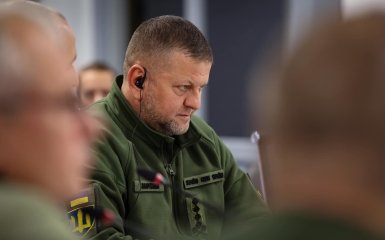The editors of the authoritative publication The Washington Post published an article about the AFU counteroffensive, in which they shared insider information from dozens of Ukrainian and American high-ranking officials and officers and soldiers on the front lines.
Why was Zaluzhnyi forced to change tactics
As the journalists found out, on June 7, 2023, the 47th separate mechanized brigade was supposed to launch counteroffensive actions to advance almost 9 miles to the village of Robotyne during the first day.
At that time, the main task of the fighters was the liberation of Melitopol. In addition, they were supposed to cut Russian supply routes.
The editorial office of The Washington Post claims that it was then that "everything went wrong."
The density of minefields and shelling exceeded all expectations, the losses of people and equipment were too great, many fighters experienced the shock of the battle for the first time and left for regrouping to rejoin the bloody battle.
According to the platoon commander of the 47th brigade, Oleg Sentsov, "It was hell fire."
Four days of the counteroffensive passed, and the Commander-in-Chief of the Ukrainian Armed Forces, Valerii Zaluzhnyi, saw the destroyed American "Bradley" ACVs, German "Leopard" tanks, and demining machines covering the battlefield.
The biggest shock for the "Iron General" was the number of dead and wounded Ukrainian soldiers.
That is why he ordered his troops to stop the attack to preserve not only the weapons but also, first of all, the lives of the soldiers.
Instead of trying to break through the Russian defenses with a massed, mechanized attack supported by artillery fire, as his American colleagues advised, Zaluzhnyi decided that the Ukrainian soldiers would go on foot in small groups of 10 men — a process that would preserve equipment and lives, but would be much slower. Months of planning with the United States of America were thrown aside on that fourth day,
The AFU blitzkrieg counteroffensive became a "war of gradual victories"
The article's authors draw attention to the fact that almost half a year after the start of the counteroffensive, the campaign turned into a "war of gradual victories."
The American command, which participated in planning the offensive, tried to convince Kyiv to concentrate its forces at one critical point in Zaporizhzhia.
However, Zaluzhnyi's team planned to advance in three directions, simultaneously restraining the Russian army.
According to the plan of the Ukrainian command, the offensive was to go south by two different routes to the Sea of Azov, as well as in the east of Ukraine around the besieged city of Bakhmut. Some Ukrainian soldiers believed that the American instructors did not understand the scale of the conflict with a more powerful enemy.
According to a soldier of the 47th brigade with the call sign "Joker", Washington somehow ignored the presence of many drones in the enemy, as well as fortifications, minefields and the like.
Even though the US plan had its advantages, it did not consider all the nuances that appeared during the counteroffensive.
When the President of Ukraine was asked during a meeting with the Secretary General of NATO at the end of September why his military continues to transfer so many forces to the east and not to the south, Volodymyr Zelenskyy replied that if the Russians lose the east, they will lose the war.



